Workshop heaters: The options and the rules
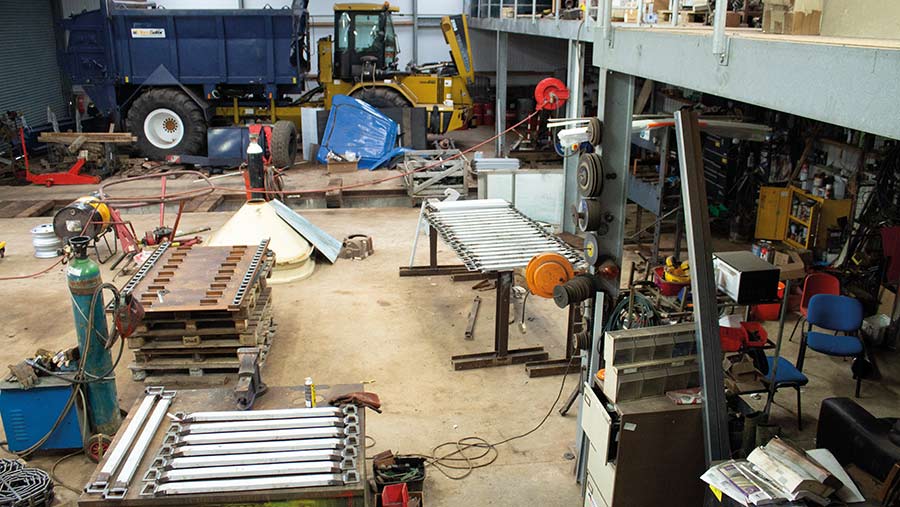
Winter is a prime time for repairs, maintenance, modifying or making pieces of equipment that will make life easier when fieldwork picks up again.
But the thought of spending long, dark days in a cold, draughty farm workshop is far from appealing. To make the place somewhere near habitable, some form of heater is therefore a must.
Up until 2016, waste oil burners were an attractive option, particularly for larger farms and contracting firms that have gallons of used sump oil to dispose of.
Before this date, local authorities were able to consider applications on a case-by-case basis and generally grant businesses a permit that cost less than £100.
See also: Video: On test – 20 top workshop tools recommended by farmers
In a bid to discourage waste oil burning, Defra introduced new rules (schedule 13A of the Environmental Permitting Regulations) that required businesses to apply for a permit at a cost of £3,363 and then shell out an annual fee of £1,343 thereafter. Unsurprisingly, that took the shine off the job.
So, if burning waste oil is out of the question legally, what do you do to keep the chilblains at bay?
First, it’s important to note that the heaters used to burn waste oil generally don’t require a permit.
Some are now classed as multi-fuel burners and these can usually be run legally on a wide range of oils, including kerosene, diesel, fresh mineral and vegetable oils. It’s up to the user to decide what they burn in it.
There are also plenty of alternatives, including indirect space heaters, oil-fired infrared units and wood burners. Below, we take a look a few of the options.
Multi-oil burners
Formerly known as waste oil burners, multi-fuel burners will run on a fairly broad range of oils and work by radiating and blowing heat into the area around them.
There are two main types – manual or automatic – and the simpler manual models are the most cost-effective for heating a farm workshop.
These tend to work on a fuel vaporising principle, which works by drip feeding the oil into a burner. It’s a fairly crude system, but it keeps the cost down and means there’s less to go wrong.
The simplest just radiate the heat into the space, but most models will have some form of fan to move the air and improve heating efficiency.
Automatic versions have an atomising burner, which uses compressed air to blow a mist of fuel into the combustion chamber.
These can be set to run on a thermostat and their more sophisticated combustion system allows them to generate higher outputs.
These heaters will need to be connected to a flue and a mains electricity supply.
Examples
ZM 135-T
ZM is a well-known name in the oil-fired heater market, and the 135-T is its best-selling manual vaporising model.
This will run on a wide range of oil-based fuels, including kerosene and diesel, as well as used engine oils, gear oils and small quantities of hydraulic oil, providing the user has a permit.
Fuel consumption ranges from 1.5-3.5 litres/hour, which means the on-board 55-litre tank will keep it going for 15 hours when being run flat out and up to 36 hours on its lowest setting.
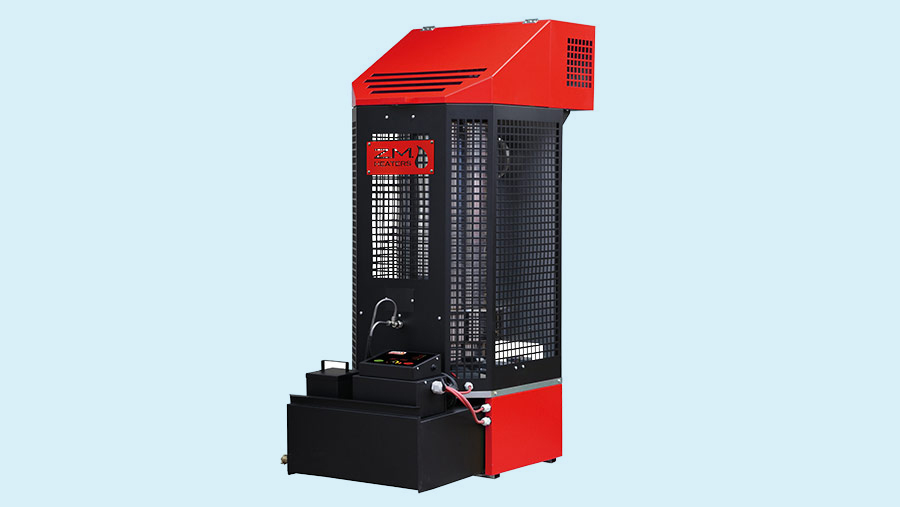
Heat output ranges from 18-35kW, which equates to a range from 62,000-110,000 British thermal units per hour (BTU/hour).
The 135-T can be ordered directly from ZM and it costs £1,395, not including the flue.
Prices for flue kits depend on the setup of the building it’s being installed in.
For spaces requiring a higher output, the firm offers larger manual models with outputs up to 170,000 BTU/hour.
Automatic models are also available with prices starting at £3,995.
Flexiheat UK Kozy 30
Flexiheat UK (formerly Kroll) sells all manner of workshop heaters, including a range of simple manual ignition vaporising multi oil burners.
Its two Kozy models come in 20kW and 30kW outputs (68,000-102,000 BTU/hour) and the larger version is the more popular choice for farm workshops.
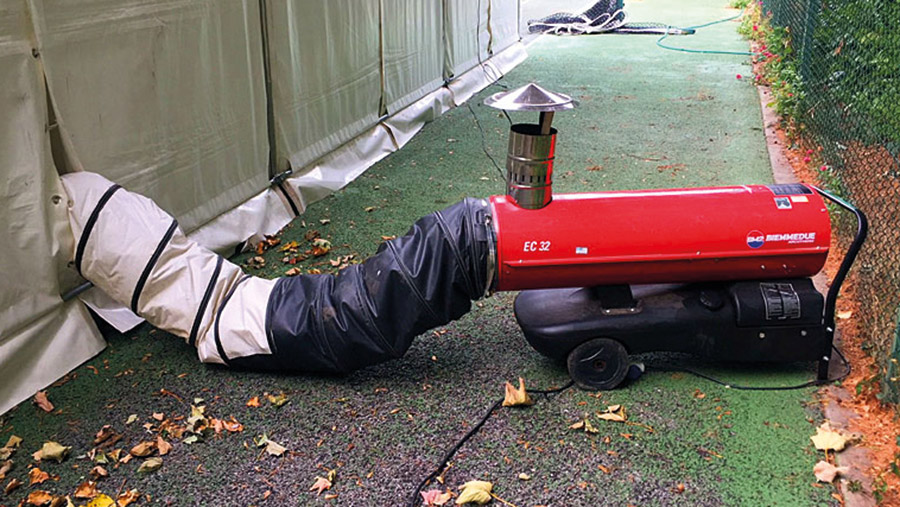
© Flexiheat
Oil consumption at maximum fire is 2.8 litres/hour and it has a 21-litre fuel tank that gives a 7.5-hour run time between fills.
The Kozy 30 costs £1,400 and can be ordered directly from Flexiheat UK, which is based in Dorset.
Indirect space heaters
Unlike conventional space heaters, indirect versions keep the burnt fuel gases and heat separate, making them suitable for buildings where people are working.
It’s not a good idea to use conventional direct space heaters in a workshop.
The downside is that these heaters require some setup to get them working properly.
Buyers can either position the heater in the workshop and use a ridged flue to pipe exhaust gasses out of the building, or they can place the heater outside and use ducting to channel the heat inside.
These units generally run on kerosene or diesel and the burner heats a chamber of clean air, which is blown into the space.
Examples
Master BV indirect heaters
Master’s BV range of indirect space heaters starts with the 21kW BV77 and extends to the 85kW BV290. This gives a heating range of 71,700-290,000 BTU/hour.
According to the firm, the BV77 is a popular option for workshops as it has a reasonable heat output and burns about 2 litres/hour of kerosene or diesel.
Tank capacity is 36 litres, so it can run for 18 hours before it needs a refill.
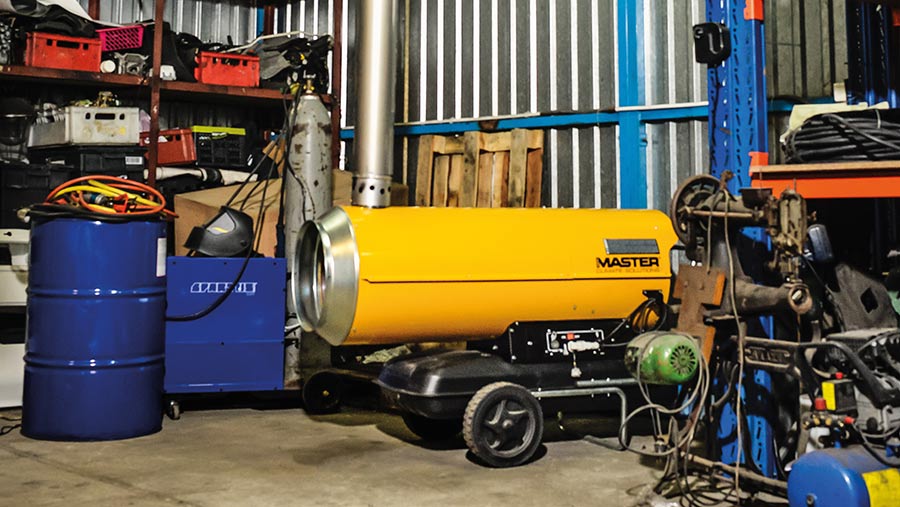
© Adam Zysko
It can run continuously or be set to work on an analogue or digital thermostat, so it will kick in and out automatically.
The BV77 has a retail price of £850 with flue kits, ducting and thermostats costing extra.
Prices increase with the output of these machines and the top-of-the-range BV290 has a list price of £1,829.
Arcotherm EC indirect space heaters
Arcotherm’s EC indirect space heaters range from 19-81kW (65,000-275,000 BTU/hour).
The popular EC32 has an output of 29kW (99,000 BTU/hour) and its 42-litre fuel tank gives it a 12-hour run time.
Like the Master BV heaters, it can be used with a thermostat to give more consistent temperature in the building and use less fuel.
The EC32 costs £1,050 and buyers will also need to purchase a flue ducting kit to direct the heat into the building.
Infrared heaters
Infrared heaters don’t attempt to heat the entire building, instead directing radiant heat at the person working.
This makes them an attractive option for larger buildings, where it would be prohibitively expensive to heat the entire space.
Because they’re not attempting to heat the air volume, infrared heaters are relatively cost effective to run, but the user does have to carry it with them as they move around the workshop.
Their portability means that heating isn’t just limited to the workshop, giving the option of working in other buildings or even outside.
Examples
Master XL61
The most popular infrared heater from Master is the XL6, which generates 17kW of heat (58,000 BTU/hour) without producing any noxious fumes.
According to the firm, this heat output is sufficient for warming an individual in a large open building or outside, and it will give them 20deg of heat 1.5m from the cells.
Fuel consumption is 1.6 litres/hour and there’s an 11-litre tank that gives a seven-hour continuous run time.
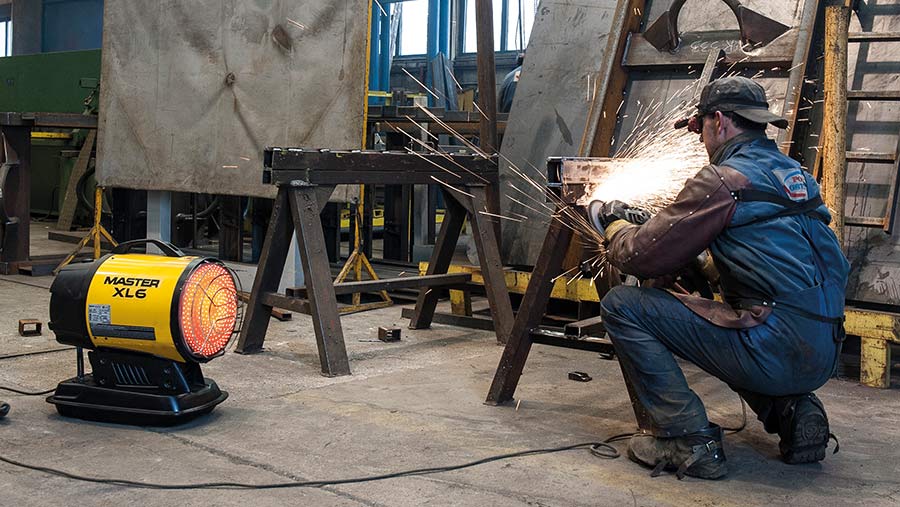
© Piotr Lysakowski
There’s a carry handle at the top of the unit that makes it easy to move to different locations and the option of a trolley.
The only external power source is plugging it into a 240V supply.
Retail price for the XL61 is £666. The firm also sells a larger XL91 that generates up to 43kW and costs £1,688.
Wilms Val6
Wilms is based in Ipswich and it has a number of infrared heaters with outputs running from 20kW to 40kW.
The Val 6 is the biggest model and roughly matches the specs of Master’s larger XL91.
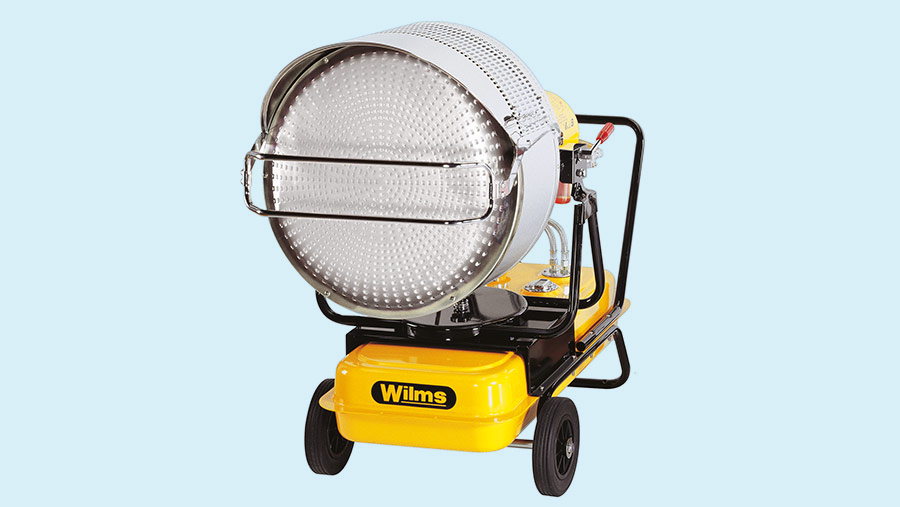
© Wilms
This heater can be run in a low setting that delivers 20kW (70,000 BTU/hour) or it can be cranked up to full power where it puts out 40kW (140,000 BTU/hour).
Fuel consumption when running flat out is 3.4 litres/hour and there’s a 40-litre tank that gives it a run time of about 12 hours. Retail price is £1,695.75.
Wood burners
For those with an abundance of waste or virgin timber, a commercial wood burner could prove a sensible option for heating a workshop.
Unlike household wood burners that have outputs up to about 14kW, these larger units can deliver similar outputs to the fossil-fuel fired heaters we’ve featured.
These heaters are a permanent fixture and need to be connected to a flue, but they don’t require a Hetas certificate such as those installed in a domestic property.
Examples
Flexiheat UK WHT30 and WHT50
Two dedicated wood-burning workshop heaters are offered by Flexiheat UK.
The WH30 can deliver an output of 22kW (75,000 BTU/hour) and burns roughly 7.7kg/hour of wood in the process.
The larger WHT50, meanwhile, is good for up to 35kW (120,000 BTU/hour) of heat and it can get through as much as 11.3kg/hour of wood.
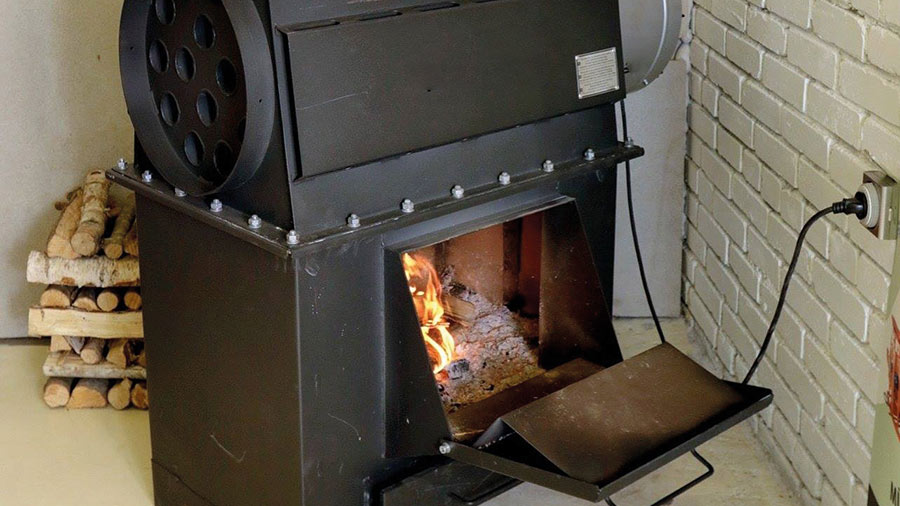
© Flexiheat
Respective loading capacities are 10kg and 15kg, so both are capable of running for an hour between fills.
These burners heat a chamber of air about the fire and an integrated fan blows the air into the space.
The burners will run efficiently on almost any wood product, providing the moisture content is less than 20%. However, they should not be fuelled with MDF or treated timber.
Prices start at £1,615 for the WHT30 and the WHT50 is £1,940.
Tecnik Stoves
A simpler and cheaper alternative to heating a workshop with wood comes from Herefordshire firm Tecnik Stoves, which makes stoves with outputs from 8-28kW (27,000-95,000 BTU).
These will burn most wood products, from wood shavings and sawdust to old pallets and logs.
Installation is relatively simple, with most models requiring a 150mm flue connection.
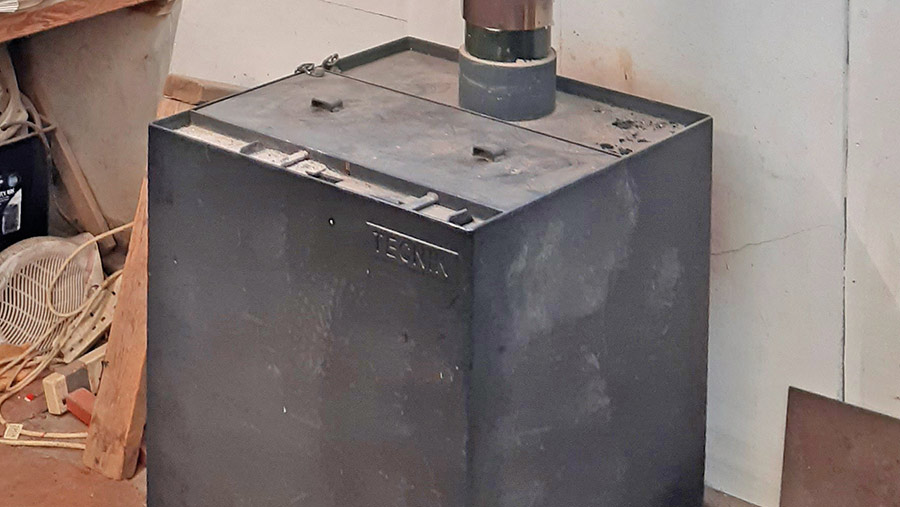
© Tecnik
It’s worth noting that they’re not Defra approved for use in smoke-control areas.
They don’t have an integrated fan, but a separate unit can be used to help circulate the heat.
Prices start at £201.50 inc VAT for the smallest 8kW model and go up to £635 inc VAT for the 28kW.
How to calculate how much heat you need
In order to effectively heat a workshop, it’s important to get a rough idea of how much heating power you’re going to need.
To make sure a heater will be up to the task, it’s worth doing a basic British thermal unit (BTU) calculation – see instructions below.
This estimates how much heat is required to warm a building based on its volume and level of insulation.
In particularly large sheds with poor insulation, it’s going to be impossible to heat the whole space effectively.
In these situations, it’s best to opt for some form of directional heater that just warms the person working.
Those committed to having a cosy workspace might want to consider insulating the building or creating a smaller work area within larger buildings.
BTU calculation
Step 1: Multiply the length, width and average height of the building in feet to give an approximate volume.
Step 2: Choose the relevant value from the list below and multiply this by the volume of the building. This will give the BTU/hour figure you require.
Example: Building measuring 20x20x18ft with no insulation: 20x20x18x9 = 64,800 BTU/hour
- No insulation (corrugated steel walls) and doors frequently opened: 9
- Poor insulation, such as block walls, and regularly opened doors: 6.8
- Average insulation, such as double-skin brick, and insulated roof: 5
- Good insulation, such as cladding, on walls and roof: 2.7
*Calculation provided by ZM Heaters

